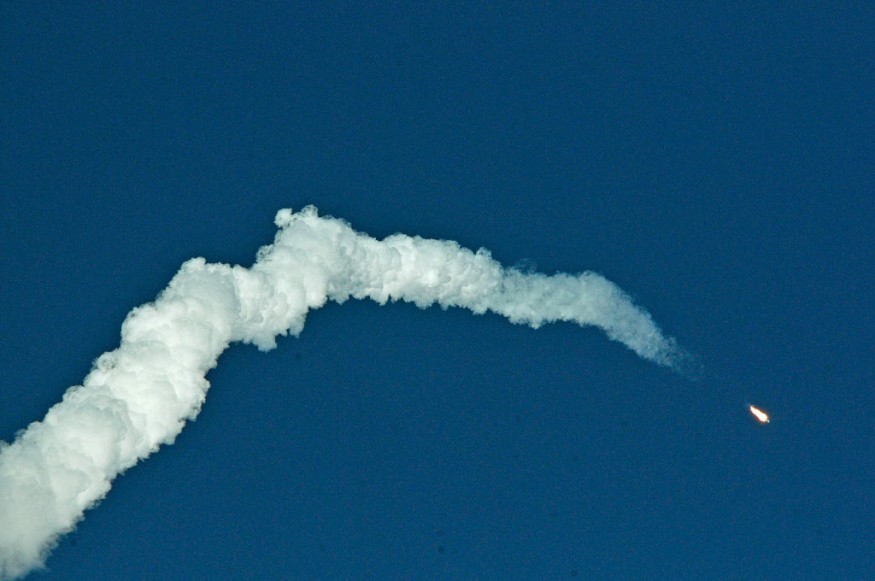In March 2017, SpaceX launched its Falcon 9 rocket into space carrying the Echostar 23 communications satellite. But it finally met its demise on Saturday when its upper stage re-entered Earth's atmosphere and completely disintegrated, with none of it falling on the ground.
The amazing footage of the small pieces of the upper stage flying off in various directions went viral online that reportedly looked like a meteorite to bystanders as it streaked across the night sky. The video was shot over Cabo, Mexico, and featured a long train of disintegrating debris.

Falcon 9 Rocket Upper Stage Re-Entered Earth's Atmosphere
On February 6, skywatchers who witnessed the re-entry of the upper stage of the SpaceX Falcon 9 rocket launched five years ago shared on Twitter their experiences as it created a light show in the night sky. The Spanish-language account Frontera Espacial tweeted a video of the disintegrating second stage of the rocket and captioned it as a "meteorite" falling over northern Mexico.
But unlike a meteorite that landed on the ground, the rocket stage completely burned when it re-entered the Earth's atmosphere and left nothing. Frontera Espacial is just one of many Twitter users who spotted the disintegrating rocket.
According to Space.com, neither SpaceX nor Elon Musk has released a statement or commented on the disintegration of the Falcon 9's upper stage. Although it is typically common for rocket stages to burn up in the atmosphere during re-entry, no one may have seen the significance of discussing the matter.
The Aerospace Corporation confirmed on their website that it was indeed the second stage of the Falcon 9 rocket launched in 2017. The company tracks upcoming re-entries of satellites and space rockets or vehicles to Earth.
It can be seen from the footage shared online that the disintegrating debris streaked across the skies of Cabo, Mexico, for at least a minute, falling down at speeds of up to 17,500 miles per hour. Skywatchers also said that they saw various parts of the rocket break off from the bright mass before burning up at different rates.
🔥 FALCON 9 DE SPACEX CAE SOBRE MÉXICO 🇲🇽
— Frontera Espacial (@FronteraSpacial) February 6, 2022
Esta noche se ha visto un "#Meteorito" cayendo sobre el norte de México.
🚀 En realidad era la segunda etapa de un Falcon 9 de SpaceX lanzado en marzo del 2017 con la misión EchoStar23.
Se ha desintegrado en la atmósfera completamente. pic.twitter.com/5ERaFTMBJ2
Echostar 23 Mission
According to MailOnline, the Echostar 23 communications satellite SpaceX Falcon 9 carried into space five years ago was launched to orbit 22,300 miles from Earth's surface, targeted to sit above the equator and provide broadcast, communication services, and internet to Brazil.
The satellite is still in operation today and is estimated to last for another decade before Echostar will replace it. NASA explained that the satellite is designed to be operational for 15 years and will begin its mission at the orbital slot at a longitude of 45 degrees West.
Echostar 23 mission was one of the 18 missions SpaceX had in 2017. The booster stage of the Falcon 9 rocket that carried the mission fell down in the Atlantic Ocean, while it was only last Saturday that the second stage burnt up. Meanwhile, another SpaceX Falcon 9 upper stage is going to hit the Moon on March 4.
RELATED ARTICLE : Falcon 9 Rocket's Second Stage Will Likely Impact Moon's Equator After 7 Years of Floating Through Space
Check out more news and information on Space in Science Times.
© 2025 ScienceTimes.com All rights reserved. Do not reproduce without permission. The window to the world of Science Times.












